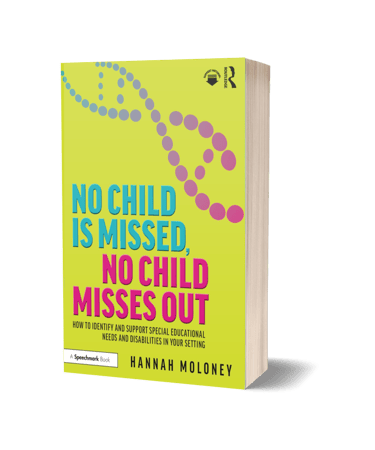Get Started
The power of screening...
Hear about the screening process first-hand from colleagues who have tried it out in their setting.


The need for screening...
However you feel about the Jamie Oliver documentary, the lived reality for millions of children and young people is their needs are missed or mis-identified.
Screening changes lives.

Why screen?
SEND is high up on the national education agenda. Currently, thousands of children are on lengthy waiting lists wanting to be assessed; the number of children and young people with Education Health and Care Plans (EHCPs) and/or not accessing school is rocketing and teachers are leaving the profession in their droves. All is not well in education. But much of this is because the system has been designed without truly considering the needs of children and young people.
Screening children allows us to know and understand each child and to be able to meet their needs. Most children just need tweaks to personalise their education journey which allows them to thrive. Screening allows us to get to know a child better, and to consider the needs of our cohorts better, too. When we understand everyone, we build inclusive settings where children and young people learn, achieve, feel happy, attend and want to belong.
Who can screen?
Any educational professional who has been trained and feels confident to work with a child or young person in this way can screen. It requires good literacy and numeracy skills and it requires being able to build trusting and respectful relationships quickly. If someone wants to screen for exam Access Arrangements then a further qualification is needed. In an ideal world, anyone who takes on the role of screening in their setting would take a further qualification in assessing, but it is not necessary and it should not be a barrier to starting. Ethically, it is not appropriate for non-educational professionals to carry out a screening. Neither is it appropriate for parent-carers to assess their own children - even if they are an educational practitioner.
Which children should be screened?
Every child should be screened. Regularly.
In 2021, the Education Policy Institute released a fascinating report which stated that the school a child attends has a bigger influence on whether they are identified as SEND or not. Not their actual profile or their needs. This is because some needs are barely noticeable (but can still impact, like visual processing difficulties) so are not picked up. It can also be because the size of a school budget can affect a school's capacity to identify and support a child's needs. Not many people are trained to screen - the SENCO qualification doesn't cover it, so it is a deficit skill in the field. What this means is that lots of children go through school and are completely missed - and then miss out - because of visible and invisible barriers.
My professional practice suggests that the number of children and young people who have specific needs is far, far higher than we think. Rather than 'SEND' I just think we're all different, trying to succeed in a rigid one-size-fits-all system. Lots of children just need little tweaks - like wearing glasses or having extra time - and many of these adaptations can be built in to our school design. When we know our children and their needs, we design inclusive schools where children and young people can thrive.
I want to introduce screening into my setting. How do I start?
Hooray! Well, you've come to just the right place. The best thing to do is to get hold of a copy of the book as it will give you a strong grounding in the theory and practice. Once you've got that, then you'll find the pages on this website much easier to understand and navigate. There's plenty of FAQs and training (below), as well as resources (on the Resources page) and there's even blogs and podcasts so you can immerse yourself in how to introduce screening into your setting. Of course, you can also give us a shout-out on social media if you've got a burning question and you can't find an answer. Most of all, we're here to help you get started and to run it well. If there's something else we can do to help, let us know!
What is screening?
A screening is a short, strategically designed one-to-one assessment. It aims to identify a profile of strengths and weaknesses which can help guide professionals and parents-carers to better understand the child or young person in their care. A screening does not seek to diagnose, or to look for the likelihood of meeting a threshold for diagnosis. Some companies offer this, but the protocols within the book No Child is Missed, No Child Misses Out and this website are designed to look holistically at a wide range of potential needs rather than to look to label for just one.


"a book I wish I'd had as a SENCO"
David Bartram OBE
"so necessary as a practical guide for teachers and leaders"
Margaret Mulholland, ASCL SEND & Inclusion Policy Lead

Tools and Training
Click on the sections below to access tools and training to help you get started.
Many resources in this section are free but some are costed.

"so many issues covered - fascinating"
Dr Emily McGhee - SENCO
"I am itching to share this book with my early years team!"
Kiri Turner, Nursery Manager and Early Years SENCO
"Do the best you can until you know better.
Then when you know better, do better."
Maya Angelou
© 2025. All rights reserved.
Subscribe to the NCIMNCMO community & access the free Get Started files today!
By submitting, I am agreeing to the Terms of Use and Privacy Policy.
All advice on this website, including links to external websites, is provided in good faith to help and support you in developing an effective screening process in your setting. It is not intended as a complete substitute for specialist advice for an individual so we encourage you to seek expert guidance if you are concerned about a child or young person. For more information, please read our full Disclaimer here.












